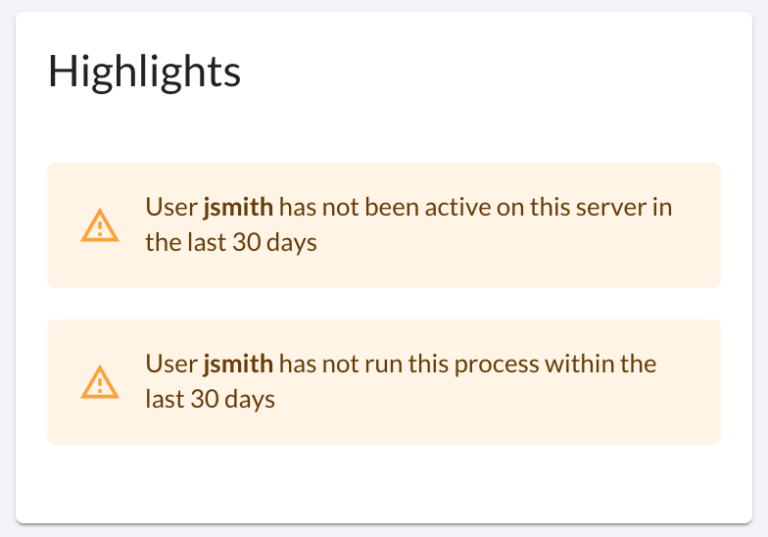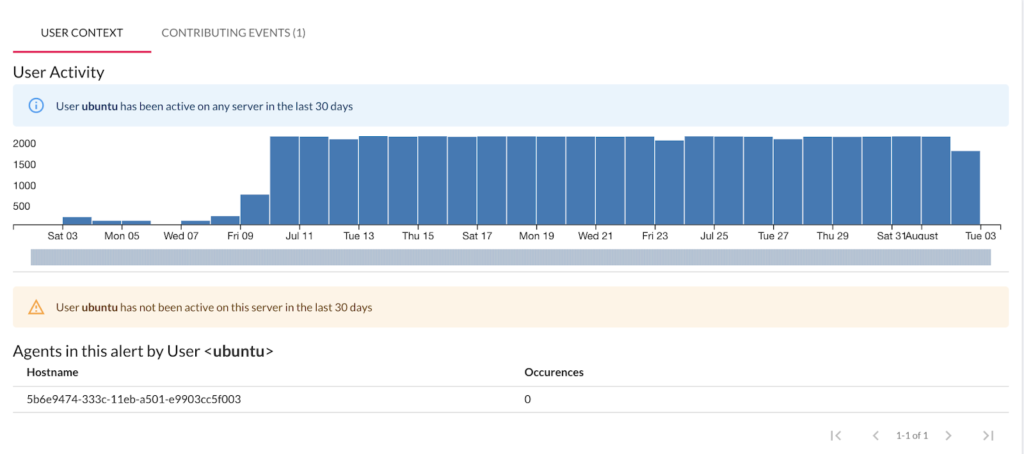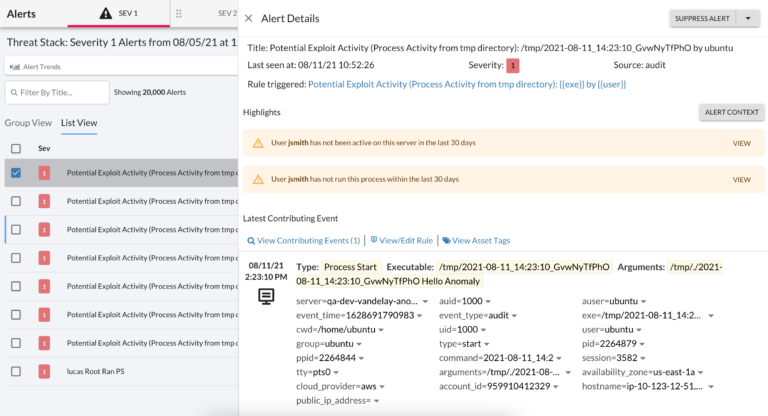2부: Threat Stack, MTTK 감소를 위한 새로운 경고 컨텍스트 출시
Threat Stack은 이제 F5 Distributed Cloud App Infrastructure Protection (AIP)입니다. 오늘부터 팀과 함께 분산 클라우드 AIP를 사용해 보세요.
이 시리즈의 1부 에서 논의한 대로 Threat Stack은 평균 감지 시간(MTTK)과 같은 주요 보안 지표를 더욱 줄이기 위해 사용자 인터페이스(UI)(알림 컨텍스트 포함)를 의미 있게 변경하는 데 전념하고 있습니다. 이는 잠재적인 보안 위험을 파악하는 데는 매 순간, 아니 매 초가 중요하기 때문에 중요합니다. 하지만 IBM 에 따르면 2020년에 침해를 식별하는 데 걸리는 평균 시간은 207일이었습니다. 고객이 이 놀라운 통계에 빠지는 것을 방지하고자, 저희는 UI에 근본적인 새로운 변경 사항을 적용하여 향상된 경험을 제공하고 보안을 강화했으며, 이는 MTTK를 줄이는 결과를 가져왔습니다. 탐험해 봅시다.
알림 컨텍스트 소개
고객이 새로운 경고 알림을 받고 분류 및 대응 워크플로를 시작하면 Threat Stack Cloud Security Platform®은 규정 준수 및 프로세스와 같은 일반적인 지표에 따라 경고를 그룹화한 다음 히트 맵 및 추세 그래프와 같은 시각화를 만들어 빈도와 양에 대한 경고 추세에 대한 통찰력을 제공합니다. 또한, 관련 이벤트를 알림과 상관 관계로 연결하여 조사를 안내하는 활동 추적을 제공합니다.
Threat Stack 사용자의 피드백을 통해 우리는 일반적인 질문이 종종 경고 분류 및 조사를 탐색하는 과정에서 발생한다는 것을 알게 되었습니다. 따라서 우리는 자주 묻는 질문을 표준화하고 기본적으로 사용자에게 사전 답변을 제공하는 새로운 알림 컨텍스트 기능을 추가했습니다. 알림 컨텍스트는 사용자가 심각도가 높은 알림을 조사하는 데 빠르고 정확한 안내를 제공합니다.
새로운 알림 컨텍스트 기능: 하이라이트, 시각화 및 표
새로운 알림 컨텍스트에 맞게 다양한 알림 데이터를 표시하는 방법을 재설계해야 했습니다. 우리는 다양한 유형의 활동에 대한 이벤트 발생을 보여주는 알림 강조 표시, 새로운 시각화, 표 등 새로운 기능을 위한 공간을 확보하기 위해 현재의 뷰를 확장해야 한다는 것을 깨달았습니다. 그 결과, 알림을 가로 서랍 보기에서 더 넓고 현대적인 세로 서랍 보기로 전환하여 사용자가 주요 알림 표를 보는 동시에 관련 알림 세부 정보를 볼 수 있게 되었습니다.
여유 공간에 추가할 수 있는 새로운 기능 중 하나는 알림 강조 기능입니다. 이 새로운 기능은 경고와 관련된 과거 활동 요약을 통해 특정 시점의 상황을 보완할 수 있습니다. 이를 통해 사용자에게 인프라, 사용자 및 프로세스 활동에 대한 맥락을 제공하고 지난달에 진행된 보안 조사 중에 중요한 지침을 제공할 수 있습니다.
예를 들어, 특정 사용자의 활동과 관련된 수많은 이벤트를 탐색하는 대신 Threat Stack은 다음과 같이 경고 자체에 대한 요약을 제공합니다.

Threat Stack Cloud Security Platform의 특정 사용자 알림 강조 표시 예
하이라이트는 또한 시각화 위에 표시되어 사용자, 에이전트 또는 프로세스 동작과 관련된 활동을 사람이 읽을 수 있는 형식으로 요약합니다. 예를 들어, 특정 사용자의 활동을 보여주는 히스토그램 시각화 위에 다음 내용이 표시됩니다.

Threat Stack Cloud Security Platform에서 단일 사용자의 동작 요약 예
또한, 지난 30일 동안 사용자의 활동을 보여주는 히스토그램과 같은 시각화를 사용자에게 제공하는 단일 페이지 알림 보기도 도입했습니다. 히스토그램은 대화형이어서 사용자는 확대해서 관심 있는 날짜의 활동을 조사할 수 있습니다. 단일 페이지 알림 보기는 심층적 링크가 가능하며 PDF로 내보낼 수 있어 조직 내부 또는 감사원과 관심 있는 알림(알림 컨텍스트 포함)을 쉽게 공유할 수 있습니다.

Threat Stack Cloud Security Platform의 샘플 데이터가 포함된 단일 창 경고 페이지의 예
UI 혁신에 대한 당사의 헌신
우리는 Threat Stack의 UI에 최근 적용된 수많은 변경 사항을 통해 고객이 알림을 원활하게 탐색하고 관리할 수 있도록 지원합니다. 우리의 목표는 더 많은 컨텍스트를 제공하여 사용자가 플랫폼에서 알림을 신속하게 분류하고 조사할 수 있도록 MTTK를 줄이는 것입니다. 이러한 업데이트는 Threat Stack 알림에 대한 디자인 반복 작업의 시작일 뿐입니다.
Threat Stack은 이제 F5 Distributed Cloud App Infrastructure Protection (AIP)입니다. 오늘부터 팀과 함께 분산 클라우드 AIP를 사용해 보세요.
